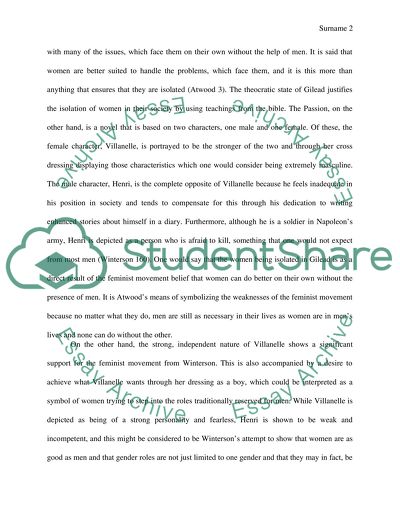Cite this document
(“Winterson's The Passion and Atwood's The Handmaid's Tale - Common Essay”, n.d.)
Winterson's The Passion and Atwood's The Handmaid's Tale - Common Essay. Retrieved from https://studentshare.org/literature/1459104-comparative-essay-between-the-passion-by-jeanette
Winterson's The Passion and Atwood's The Handmaid's Tale - Common Essay. Retrieved from https://studentshare.org/literature/1459104-comparative-essay-between-the-passion-by-jeanette
(Winterson's The Passion and Atwood's The Handmaid'S Tale - Common Essay)
Winterson's The Passion and Atwood's The Handmaid'S Tale - Common Essay. https://studentshare.org/literature/1459104-comparative-essay-between-the-passion-by-jeanette.
Winterson's The Passion and Atwood's The Handmaid'S Tale - Common Essay. https://studentshare.org/literature/1459104-comparative-essay-between-the-passion-by-jeanette.
“Winterson's The Passion and Atwood's The Handmaid'S Tale - Common Essay”, n.d. https://studentshare.org/literature/1459104-comparative-essay-between-the-passion-by-jeanette.


